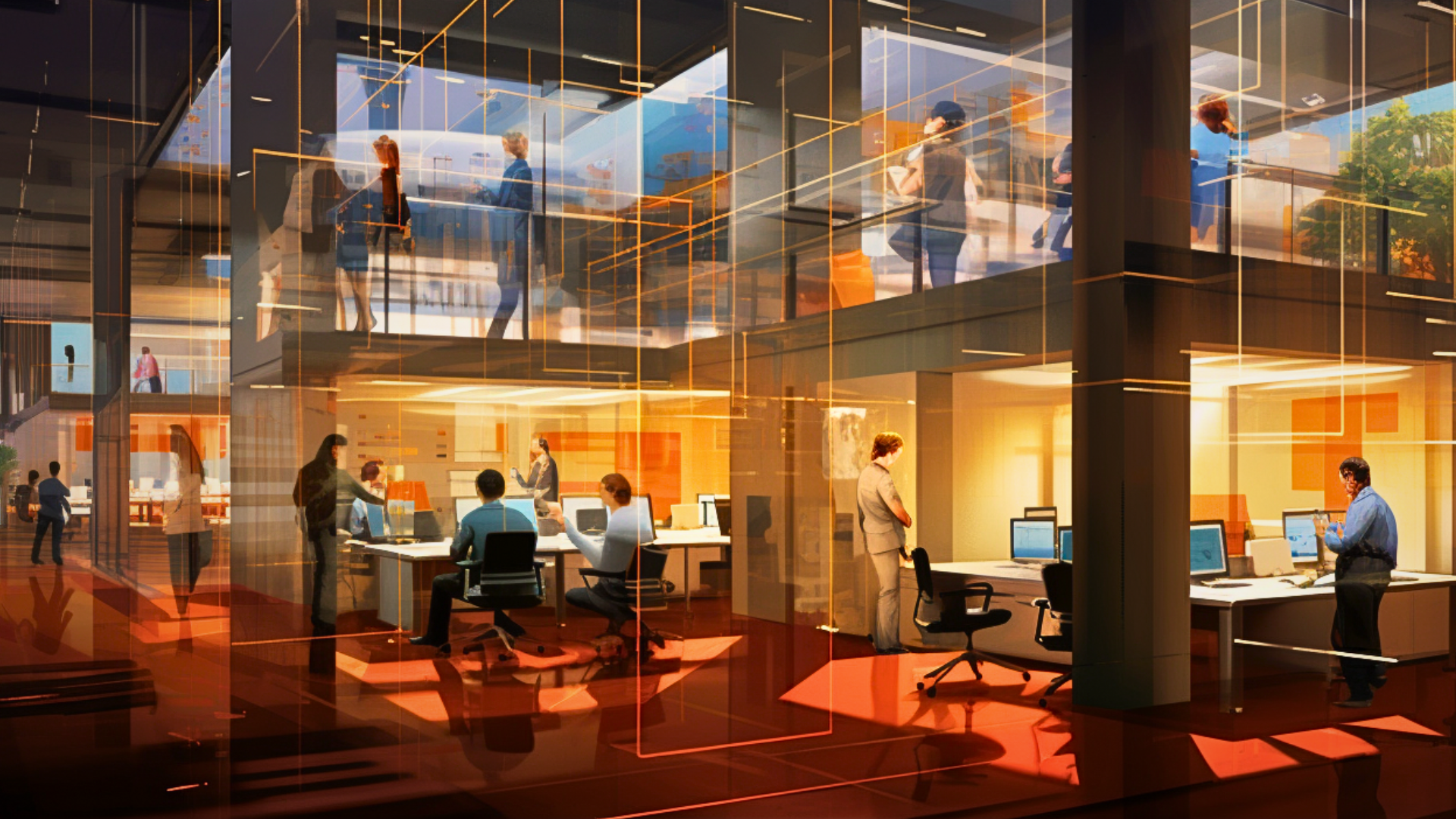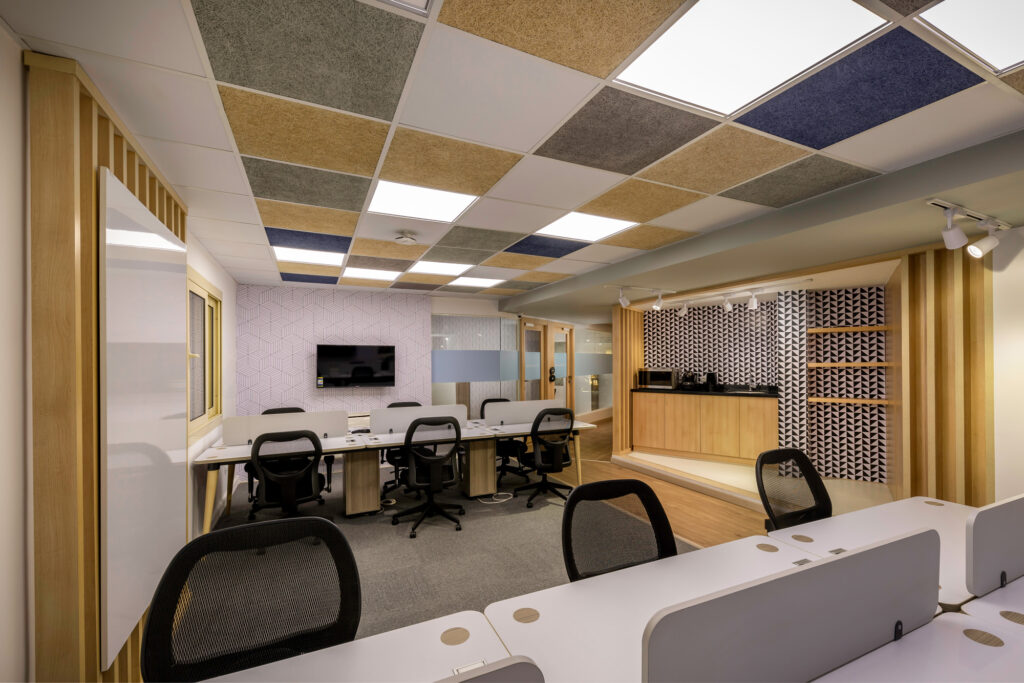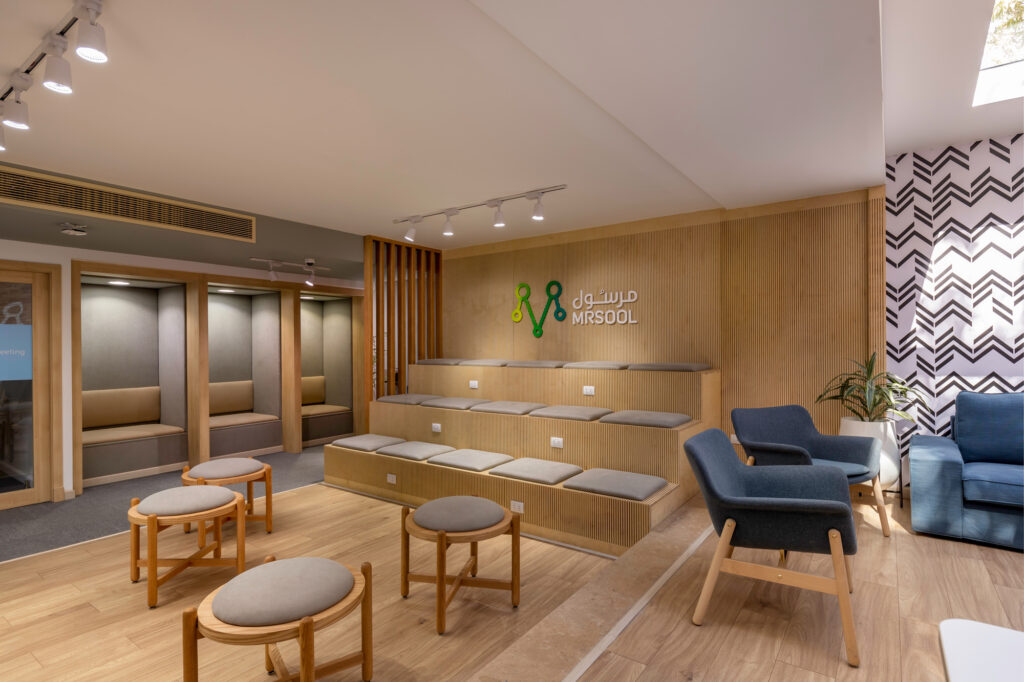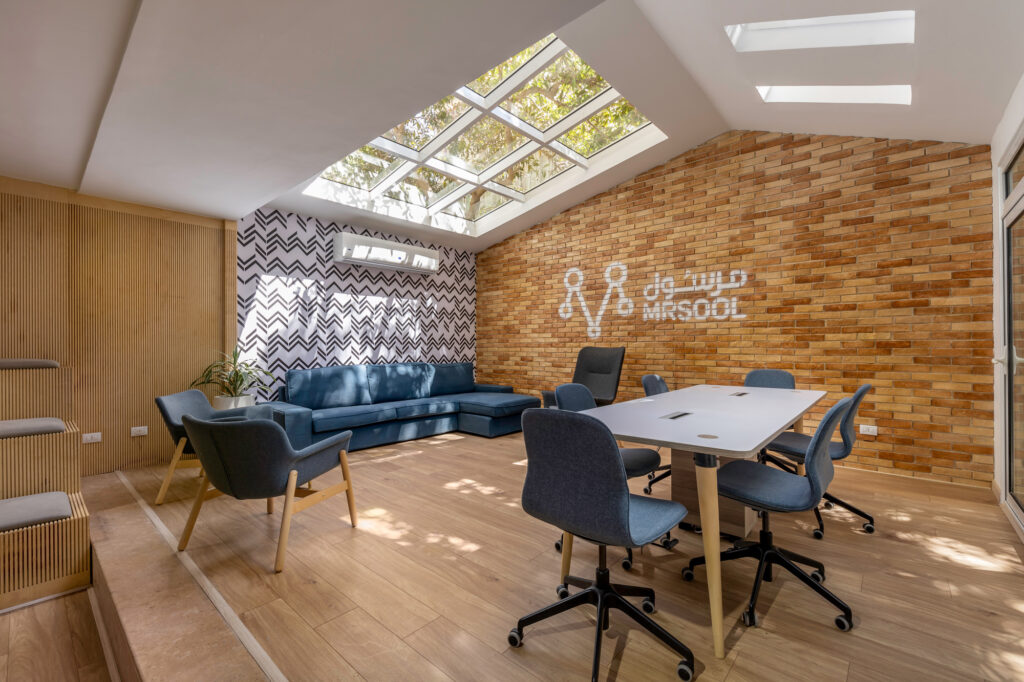
From Burned Out to Balanced: Designing Workplaces for Well-Being and Productivity
Feeling stressed, overwhelmed, and burned out seems to have become an all-too-common...

In our rapidly evolving knowledge economy, large corporations face a nuanced challenge: How to effectively design a workspace that accommodates the myriad needs of large teams with unique dynamics and functions while fostering a deep sense of belonging and community? Drawing inspiration from urban planning, this article explores the innovative potential of the “Neighborhood-based Choice Environment” to address this pressing concern.
Historically, the factory model of the Industrial Revolution prioritized efficiency, treating employees as basic production units. The 20th-century shift towards a knowledge-based economy underscored the importance of teamwork, leading to more open and collaborative spaces. This emphasis on community-driven workspaces was further amplified in the knowledge-based economy era, with tech giants like Google leading the way.
Current research emphasizes the strong link between employee belonging and productivity. Nonetheless, the intricacies of sizable organizations, where teams often have distinct dynamics and needs, call for a design approach that is both functionally robust and fosters community ties.
At its essence, urban design is about creating cohesive communities. By understanding and integrating the diverse needs of its inhabitants, cities thrive. A close look at a prosperous city reveals meticulous planning that addresses varied needs while promoting communal sentiments. Public squares, parks, and neighborhoods are crafted, keeping both the individual and the collective in mind. Adapting this urban rationale to the organizational context can revolutionize workspace models.
The Neighborhood-based Choice Environments (NCE) workplace model further draws on this analogy. Picture the workplace as a collection of ‘neighborhoods’ reminiscent of city zones. These zones, custom-made for specific teams, fulfill the respective teams’ requirements while interwoven into the broader community fabric. In this model, spaces are assigned to groups, not to individuals. Each neighborhood could be seen as an activity-based workplace (ABW) for teams, giving team members a genuine sense of belonging.
Central to the NCE model is the focus on communal spaces. Reflecting a city’s community centers, parks, or libraries, these workplace neighborhoods boast communal areas like assembly zones, work lounges, brainstorming pods, and relaxation nooks. These communal spaces become hubs for spontaneous interactions between different teams, enhancing collaboration across the organization.
To harness the full benefits of NCE, it’s crucial to proactively address potential issues like noise distractions or the dilution of team-specific identities—challenges often associated with open-plan offices.
Addressing these concerns demands a balanced design strategy. This includes acoustic zoning that offers the right balance of open spaces and quiet spaces according to the organization’s specific needs. Furthermore, it is essential to delineate neighborhoods with distinct design elements to preserve team cohesion while also maintaining consistency of the spatial experience across the whole workplace.
The NCE model comes to life in the Mrsool Workplace Project in Cairo (2020). Spanning three levels, we designed the space to accommodate the diverse teams, each allotted a zone tailored to their distinct needs.
At a central location in the workplace, there is an accessible Work lounge, designed to offer a ‘Living Room’ experience providing employees both comfort and a refreshing shift from their typical workstations. This is complemented by the communal steps that act as a central square for all assembly meetings.




In a time where workspaces are evolving beyond mere physical necessities, the “Neighborhood-based Choice Environment” presents a dynamic and novel approach. For large organizations, this design approach can morph large workplace areas into interconnected, functional, and community-centric habitats. By drawing from urban design principles, business leaders can cultivate workplaces that are not only practical but also foster belonging and community, ensuring every employee feels engaged and valued.
Selected Bibliography
Bernstein E. and Waber B. (2019), The Truth About Open Offices, Harvard Business Review.
HOK (2018) , HOK Forward: Workplace Research + Trends 2018.
Myerson J. and Ross R.(2022) Unworking: The Reinvention of the Modern Office.
W. Carr, E. et al. (2019) The Value of Belonging at Work, Harvard Business Review.